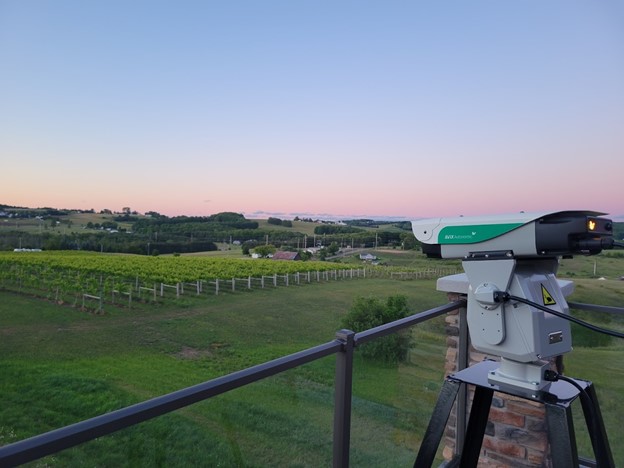For as long as humans have been enjoying wine, we have been competing with birds for the fruits of our labor. Ripening grapes are a bird delicacy, filled with the energy and hydration needed to bulk up for winter and migrate long distances. With no bird management, vineyards can lose 40-90% of their yield to the voracious appetites of starlings, robins, and other fruit eating birds.
Over the millennia, people have invented numerous ways to prevent birds from damaging and consuming crops. In modern times, netting and noisemakers have been the go-to for vineyards and orchards for decades. However, each of these has some significant flaws, either in efficacy or in labor and maintenance.
Recent innovations allow us to introduce the autonomic laser: a winery’s best friend! Birds see differently than we do, and autonomic lasers create a frightening situation that can be effective at reducing bird populations by up to 99%, with minimal labor and 24/7 protection. The random and customizable tracking pattern prevents birds from becoming acclimated to it like they do to other visual and audio frightening devices. Andrew Roush, owner of Petoskey Farms Vineyard and Winery, states that,
“…we have intense bird pressure, primarily from Starlings. Historically, we have used bird netting to limit loss and damage to our grape crop. …netting is a big labor expense and the bird pressure was getting progressively worse… We lost 35 – 40% of our grape yield and were forced to pick earlier… In 2021 we installed two AVIX Autonomic bird lasers to cover our vineyard. We were able to let the fruit hang late and estimate total crop loss to be 3%.”
Lasers aren’t flawless; their up-front costs can be daunting. However, they usually pay for themselves in labor costs and yield increases in one growing season and with a lifespan of over 10 years, they are a significantly profitable investment, especially now as prices for everything continue to rise. It’s time for vineyards to truly enjoy the fruits of their labors, so that making wine can be the labor of love it has always been.




